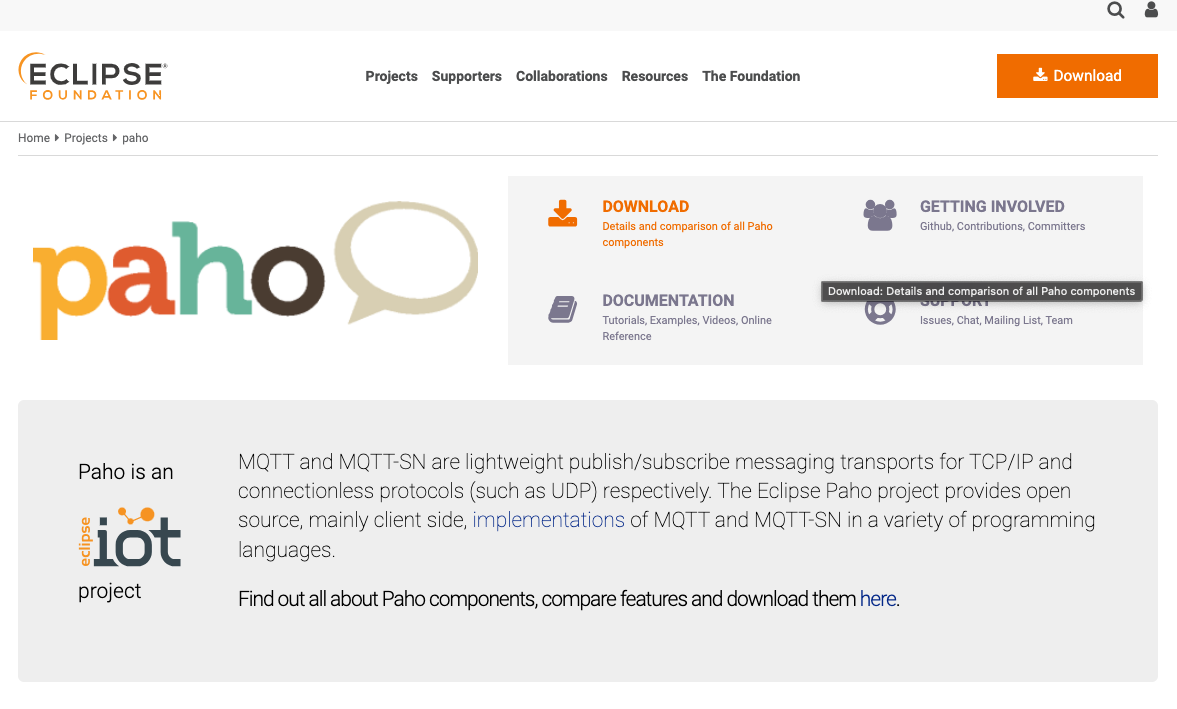Daily Hack #day101 - Eclipse Paho
 Cloud Tuned
Cloud Tuned
Eclipse Paho Overview
Eclipse Paho is a project within the Eclipse Foundation that provides open-source client implementations of the MQTT (Message Queuing Telemetry Transport) protocol. MQTT is a lightweight messaging protocol widely used in IoT (Internet of Things), mobile, and machine-to-machine (M2M) communications. The Eclipse Paho project aims to facilitate the development of reliable, scalable, and secure applications using MQTT.
Key Features
Multi-Language Support:
- Eclipse Paho offers client libraries in multiple programming languages, including Java, Python, JavaScript, C, C++, and Go, making it versatile for developers working in different environments.
Cross-Platform Compatibility:
- The Paho libraries are designed to be cross-platform, ensuring compatibility with various operating systems like Windows, macOS, Linux, and embedded systems.
Comprehensive Documentation:
- Paho provides extensive documentation, including tutorials, API references, and sample applications, which helps developers quickly get up to speed and integrate MQTT into their projects.
Quality of Service (QoS) Levels:
- The Paho libraries support different QoS levels (0, 1, 2), allowing developers to choose the appropriate level of message delivery assurance for their applications.
SSL/TLS Support:
- Security is a critical aspect of IoT applications, and Paho supports SSL/TLS to ensure secure communication between clients and brokers.
Asynchronous and Synchronous Communication:
- Paho provides both asynchronous and synchronous communication models, giving developers flexibility in how they handle MQTT message exchanges.
Client Persistence:
- The libraries support client-side persistence, which helps maintain state information and ensures reliable message delivery even in cases of intermittent connectivity.
Community and Ecosystem:
- As part of the Eclipse IoT Working Group, Paho benefits from a strong community of developers and contributors who continually enhance and support the project.
Common Use Cases
IoT Device Communication: Paho is widely used to enable communication between IoT devices and central servers or cloud platforms.
Mobile Applications: Developers use Paho to build mobile apps that require real-time messaging and updates.
Home Automation: Paho libraries facilitate communication between various home automation devices and systems.
Data Collection and Monitoring: Paho helps collect data from sensors and devices, enabling real-time monitoring and analytics.
Getting Started
Installation:
Paho libraries can be easily installed via package managers. For example, in Python, you can install the Paho client using pip:
pip install paho-mqtt
Basic Usage:
Here’s a simple example of using Paho in Python to connect to a broker, subscribe to a topic, and publish a message:
import paho.mqtt.client as mqtt def on_connect(client, userdata, flags, rc): print("Connected with result code " + str(rc)) client.subscribe("test/topic") def on_message(client, userdata, msg): print(msg.topic + " " + str(msg.payload)) client = mqtt.Client() client.on_connect = on_connect client.on_message = on_message client.connect("broker.hivemq.com", 1883, 60) client.loop_start() client.publish("test/topic", "Hello, MQTT!")
Documentation and Resources:
- Explore the official Eclipse Paho documentation for detailed guides, API references, and additional resources.
Conclusion
Eclipse Paho is an essential project for developers working with MQTT, providing robust and flexible client libraries for various programming languages and platforms. Whether you are building IoT solutions, mobile applications, or real-time data monitoring systems, Eclipse Paho offers the tools and support needed to implement reliable and secure MQTT communication.
Subscribe to my newsletter
Read articles from Cloud Tuned directly inside your inbox. Subscribe to the newsletter, and don't miss out.
Written by
